Brazilian Culture and Lifestyle Guide
What You Should Know About Living and Traveling in Brazil
Brazilian culture is diverse and fascinating. To fully appreciate all that Brazil has to offer it is important to understand the unique qualities of it's land and people.
Before traveling or moving to Brazil use this guide to acquaint yourself with the "land of the Amazon" and be prepared to enjoy the experience of a lifetime.
Contents:
- The People of Brazil
- Demographic Culture
- Amazon Rainforest
- Food of Brazil
- Brazilian Music
- Brazilian Dance
- Soccer
- Brazilian Carnivals
Introduction
Brazilian culture is one of the most distinct and unique in the world. An eclectic blend of the old and the new combined with the perfect mix of race and ethnicities work to create a diversity that gives this country an extraordinary charm and welcoming atmosphere.
Known as the land of the Amazon or the land of contrasts, this spectacular nation is home to generous people, stunning scenery, beautiful beaches, distinctive music and dance, and the largest rainforest on earth.
Brazil offers history, adventure, culture, and cuisine, all presented in an easy going, relaxing way that makes visitors feel right at home.
Whether you are planning a short visit or an extended stay, it is helpful to understand the Brazilian culture and its amazing people so you can fully appreciate everything this land has to offer.
The People of Brazil
Brazil is a nation of immigrants, an ethnically diverse land that has a heritage founded on Asian, African, European, Middle Eastern, and North American descent.
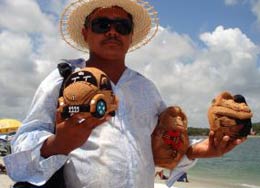
Years of working toward the common goal of colonization and centuries of intermarriage have blurred ethnic lines and resulted in a unique culture that truly defines Brazil.
This country has found a way to create unity from diversity and to use a variety of cultural influences to build a nation that represents the qualities and characteristics of its people.
The culture of Brazil differs vastly from the westernized world, and this is very evident in the nature and personality of the Brazilian people.
- One of the most distinctive characteristics of the Brazilian people is their generosity, which they show liberally, even to strangers. In fact, when you meet someone, it is not uncommon to be invited to their home for a meal. Even the poorest families will offer food or refreshments to visitors, sometimes when they hardly have enough to feed their own families. Regardless of the situation, they are always willing to do what they can to help others, even when they don't have much to give.
- Despite poverty and difficult circumstances, the Brazilian people are undeterrably optimistic. Predominately Roman Catholic, they have a strong belief in God, and it is this faith that sustains them through life's difficulties. The people of Brazil are comfortable with spirituality and talk openly about spiritual things, unlike many other cultures that feel one's religious allegiances should be private and personal, not discussed publicly.
- Relationships are more important than money or possessions. People take precedence and family is the very center of their culture. Large families are common and most social activities focus on these relationships.
- The Brazilian people adhere to a much slower pace of life than what those from western nations may be accustomed to, although there is some exception to this in the more westernized cities such as Sao Paulo. There is basically a 'que sera sera' attitude -whatever will be, will be - and the people take things as they unfold, accepting the 'flow' of life with calm and patience. You can expect to spend a lot of time waiting, so just relax, take a deep breath, and enjoy the scenery of this beautiful country.
- Brazilians are physically expressive and will often touch your arm, shoulder, or hand when speaking with you. Handshakes, hugs, kisses, or entering your personal space when talking are commonplace, but this closeness can be uncomfortable if you are not prepared or do not understand that this is the Brazilian way. When women meet they will exchange kisses on the cheek and men will greet each other with a handshake or pat on the back.
- The Brazilian people are very friendly and social. They will engage you in animated conversations and especially enjoy talking about soccer, family, and children. They prefer face-to-face contact and do not like to do business over the phone or through email.
- Brazilians have a great appreciation for the arts including dance, theater, music, literature, and poetry, and use these as a way of documenting and celebrating their unique culture.
Rules of Etiquette
When visiting or traveling to Brazil, it is helpful to know a few rules of etiquette so you can show proper respect and appreciation.
- Men shake hands in greeting, and eye contact is very important.
- Women greet each other with kisses on both cheeks, beginning with the left.
- If you are invited to a home for dinner, bring the hostess flowers or even a small gift. The Brazilian people are very appreciative and value that quality in others. Orchids are particularly special, but never give something in purple or black, as these are considered mourning colors.
- Do not worry about punctuality. In fact, it is customary to arrive at least ½ late to a dinner.
- Dress nicely. Even if you are visiting a home in one of the poorer areas, it is still important to convey to the hosts that their generosity is valued and that you consider the invitation an honor. Brazil has approximately 190-200 million people, most of whom live in serious poverty. Although the country enjoys a very diverse economy and has seen growth in their GDP even during a worldwide recession, there is still a lot of inequality.
Sometimes referred to as the two Brazils there is a huge difference between the poor, less developed communities of the North and the more prosperous and industrialized Southern regions.
With the help and vision of new leadership, 20 million Brazilians have been able to overcome poverty; however, there is still a significant gap between the rich and poor, as seen with the growing slums, increasing number of street children, and rising crime rates.
Most of the people align themselves with the area or state of birth; however, rich or poor, they all share a national culture and a pride that is evident to anyone who spends time in this beautiful nation.
Demographic Culture
The Federation of Brazil is divided into 26 states and 1 Federal District, and when traveling through this country you will notice that certain areas strongly reflect the specific nationalities represented.
Brazil's northeast coast is home to large sugar plantations originally built on slave labor, which is evident in the distinct African influence that can still be seen today.
The southeast coast attracted immigrants from Europe, the Middle East, and Japan, who established small family farms or businesses which eventually evolved into bustling urban centers such as Sao Paulo.
Southern Brazil saw an influx of Germans and Italians, who raised cattle and grew crops, establishing this area to become one of the most prosperous in the country.
Just as there is great diversity among the people of Brazil, there is also a unique flavor and culture to the various cities and states that make up this nation.
Culture of Brazilian Cities
Nearly 75% of the Brazilian population make their homes in urban areas and cities. In the past, there was a lot more rural living, but a recent influx of people coming into the cities has created a significant increase in both crime and poverty.
A lack of jobs and insufficient housing has resulted in rapidly growing slums and unsafe areas, so when visiting Brazil it is important to get a map of each city and know what to expect.
Visiting a variety of cities in Brazil is the best way to get a true idea of the Brazilian culture. Although there are so many to choose from, there are a few that definitely stand out as being the most popular for tourists.
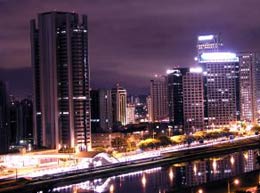
- Sao Paulo: This bustling metropolis blends history with modern life to create a very vibrant and cosmopolitan atmosphere. Visitors can enjoy music or theater, tour museums and historical landmarks, attend a sporting event such as soccer or car racing, or relax over a leisurely meal of traditional or ethnic cuisine. Known as a premiere business center and home to over 15 colleges and universities, Sao Paulo is one of the busiest cities in the country and offers everything you will need when traveling or living in Brazil.
- Rio de Janeiro: Probably one of the most well known Brazilian destinations, this city boasts beautiful beaches, exciting carnivals, the famous Maracana Stadium, and stunning Sugarloaf Mountain.
- Salvador: Nicknamed the City of Happiness, Salvador is noted for its music, food, arts, and architecture. And, if you choose the right time to visit, you can be part of the largest street party in the world, Carnival of Salvador da Babia.
- Brasilia: One of the few planned communities in the world, Brasilia is also one of the most unique cities in Brazil, especially if you are interested in experiencing the political climate of this nation. It is an important government and economic center and is also home to many historical sites and museums.
- Fortaleza: Brazilians love to party and celebrate, and if you are looking for exciting nightlife, Fortaleza is definitely the place to visit. Enjoy the carnivals, music, festivals, and 16 miles of urban beaches.
- Curitiba: Located in Parana, this city is the ecological capital of Brazil and the perfect location for the outdoor or nature lover. With 28 parks and many wooded areas, you can spend several days exploring this fabulous city.
- Manaus: This city is surrounded by the Amazon jungle and home to New Town, the largest neighborhood in Latin America.
- Belem: An abundance of mango trees has helped this city earn the title of City of Mango Trees, but its unique culture is also defined by its freshwater beaches, colonial architecture, and the procession of the Cirio of Nazare, the most important religious celebration in Brazil.
Amazon Rainforest
A large part of the Brazilian culture is rooted in the traditions and customs of the indigenous people living in the Amazon Rainforest. This diverse ecosystem spans 1.7 billion acres and covers 9 different countries.
It is the largest and most dense rainforest in the world and boasts more than 1000 plant and tree species per square kilometer. In fact, it is approximated that 1 in 10 plant, animal, and insect species actually live in the Amazon rainforest.
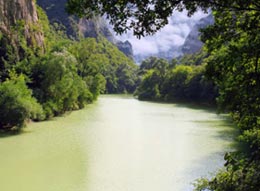
The rainforest is an integral part of Brazil and has influences that extend beyond its borders to many other nations. Rainforest vegetation produces nearly 20% of the oxygen needed around the world and tropical rainforests provide food such as fruit, spices, chocolate, vanilla, and nuts. In addition, cancer fighting drugs are produced from rainforest plants as well as many other natural and herbal medications.
It is impossible to discuss Brazilian culture without mentioning the 350 indigenous groups living within the Amazon Rainforest, totaling nearly 30 million people. Although many have been forced to adopt more modern ways in order to survive, their heritage and traditions are an important aspect of Brazil's character and personality.
Exploitation of natural resources by commercial companies, clearing of land for farming, government subsidies to encourage agriculture, mining, roads, and logging industries have all contributed to the destruction of the Amazon rainforest.
If this destruction is not stopped, not only will the indigenous people lose their way of life, but the entire world could be adversely impacted. Many plants and animals are already facing extinction and the benefits of the rainforest could be lost forever, taking with it some of the most unique and distinct cultural heritages in the world.
Food of Brazil
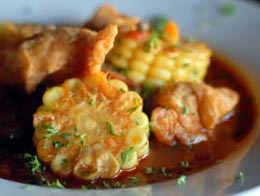
Food is an expression of culture and specific cuisine often becomes associated with particular nations. Manioc, rice, beans, okra, peanuts, and fresh fruit make up the core of the Brazilian diet, with the national dish being 'feijoada', a meat stew made from pork and black beans.
In line with the diversity of its people, each region of Brazil has its own style of cuisine, influenced by its immigrants. Northern Brazil is a mix of Portuguese and Indian descent, with manioc, fish, peanuts, and tropical fruits being popular choices. If you visit this area, be sure to try vatapa, a spicy mixture of bread, shrimp, red pepper, ginger, peanuts, onions, and coconut milk. Pato no Tucup, or duck stew, is also a great choice, as well as Tacaca, a soup made from herbs, shrimp, yellow pepper, all simmered in a manioc root broth.
Italians and Germans settled in Southern Brazil and brought with them their wine making skills and hearty vegetable or pasta recipes. Besides the popular lasagna, tantalize your taste buds with a little Arroz Carreteiro, a mixture of meat, rice, tomato, onion, and spices. Or, try the traditional Barreado, a meat stew served with rice, manioca flour and fried bananas.
The Amerindian, African, and Portuguese influence is evident in the cuisine of Northeast Brazil. Although there are many dishes made from fruit, okra, beans, rice, and coconut, you will not want to miss sampling the signature Acaraje, black eyed peas rolled into a ball, deep fried, and stuffed with shrimp, vegetables, or various sauces. These tasty little fritters can be found anywhere, from venders at the beaches, to local markets and restaurants.
When traveling through Southeast Brazil, you can enjoy chicken with okra, fried bananas, or Farofa, lightly toasted manioc flour. And of course, Brazilians love their sweets, so take advantage of the amazing desserts like brigadeiros.
Brazilian Music
Music is one of the first things you think of when someone mentions Brazil. It is everywhere from the bars, restaurants, beaches, sporting events, businesses, homes, on the streets, and even the mountains. It is part of the Brazilian lifestyle and cultur. Brazil music is a way of keeping many of the significant historical moments alive ,as well as a means of passing traditions down through the generations.

Family celebrations focus on music. It is always a part of carnivals and religious rituals or services. It is used to express the heart of the people and often tells a story or depicts important events. The lyrics speak to the history and soul of the people, talking of the longing for freedom, the desire for love and romance, or even mentioning those things vital to survival such as food, water, and weather.
Bringing together the styles of many different backgrounds, Brazil has created a unique sound that is recognized worldwide. The African influence is seen in the Brazilian drum music called Sambass which is a mixture of bass with various drumbeats and rhythms.
The folk music of the indigenous people is blended together with a more modern sound to create Brazilian Pop Music. From samba to choro, forro, maracatu, and even classical and operatic, music is definitely a integral part of the Brazilian culture.
Brazilian Dance
If you plan to spend any time in Brazil, you will quickly discover that dance is very much a part of the culture. In fact, you will rarely hear music without seeing someone dancing along with it.
Although there are many styles of Brazilian dance, the choreography almost always tells a story and is significant to the Brazilian people. In fact, many of these dances have been incorporated into musical dramas and exercise routines that are popular in many different countries around the world.
If you want to enjoy the social life of Brazil, it would be helpful to learn some of the popular dances as well as their history and meaning.
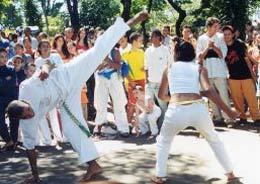
- Capoeira: This dance is strongly influenced by the African people and has its roots in slave labor. Slaves were punished for fighting, so they devised a way to make their fights look like a dance. The basic rules were that they could not use their hands (since this would look like fist fighting) but they were permitted to use their feet, head, legs, or heels and even incorporate cartwheels or handstands. Today, capoeira moves are used as a form of exercise, particular in routines that use martial arts movements.
- Samba: This is the dance most often associated with Brazil and also began with the African people. Forced to practice Christianity, and punished for observing any other religion, the Africans created this dance as way of secretly honoring their religious beliefs. When slave owners caught on, the dance became forbidden; however, the samba was kept alive by combining the original movements with other forms of music and dance. Today, Samba is one of the most popular Latin dances.
- Bumba-Meu-Boi: This dance is actually a drama with a clear storyline portraying the struggles faced by the people when colonizing Brazil. It has very specific steps and is powerful in remembering this important time in Brazilian history.
- Coco: This is a fun, upbeat, rhythmic dance performed in a circle.
Soccer

Of course, no discussion on Brazilian culture would be complete without mentioning the national pastime of soccer. No matter where you go in the country, you will likely find a game being played, whether organized or impromptu.
The people are very proud of their national team and children learn to play the sport at a very young age, resulting in Brazil producing some of the best soccer players in the world. So, brush up on your kicking skills,because you will probably be joining more than a few games during your stay.
Brazilian Carnivals
Brazil is known for its spectacular carnivals and celebrations. The colors, sites, and sounds all mix to create a jovial and vibrant atmosphere that can last for several days. People from every class gather together to enjoy parades, costumed dancers, musicians, formal balls, street dancing, and various contests.
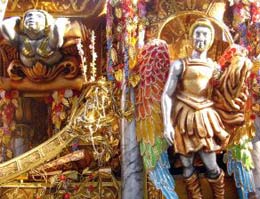
Carnivals are a way for the people to escape daily difficulties, forget about their poverty, and come together with fellow Brazilians to celebrate life. The popularity of costumes means that anyone can be whomever they wish for a few days and live in a fantasy world that is simply fun and relaxing. The famous annual Carnival parade in Brazil is the most well attended holiday in the country and is also a popular tourist attraction.
Whether you are visiting or planning to live in Brazil, you will soon realize that this country has a unique and fascinating culture. Enjoy the scenery, dance to some music, tour the diverse cities, and spend some time getting to know the amazing Brazilian people.
New! Comments
Share your thoughts about what you just read! Leave me a comment in the box below.